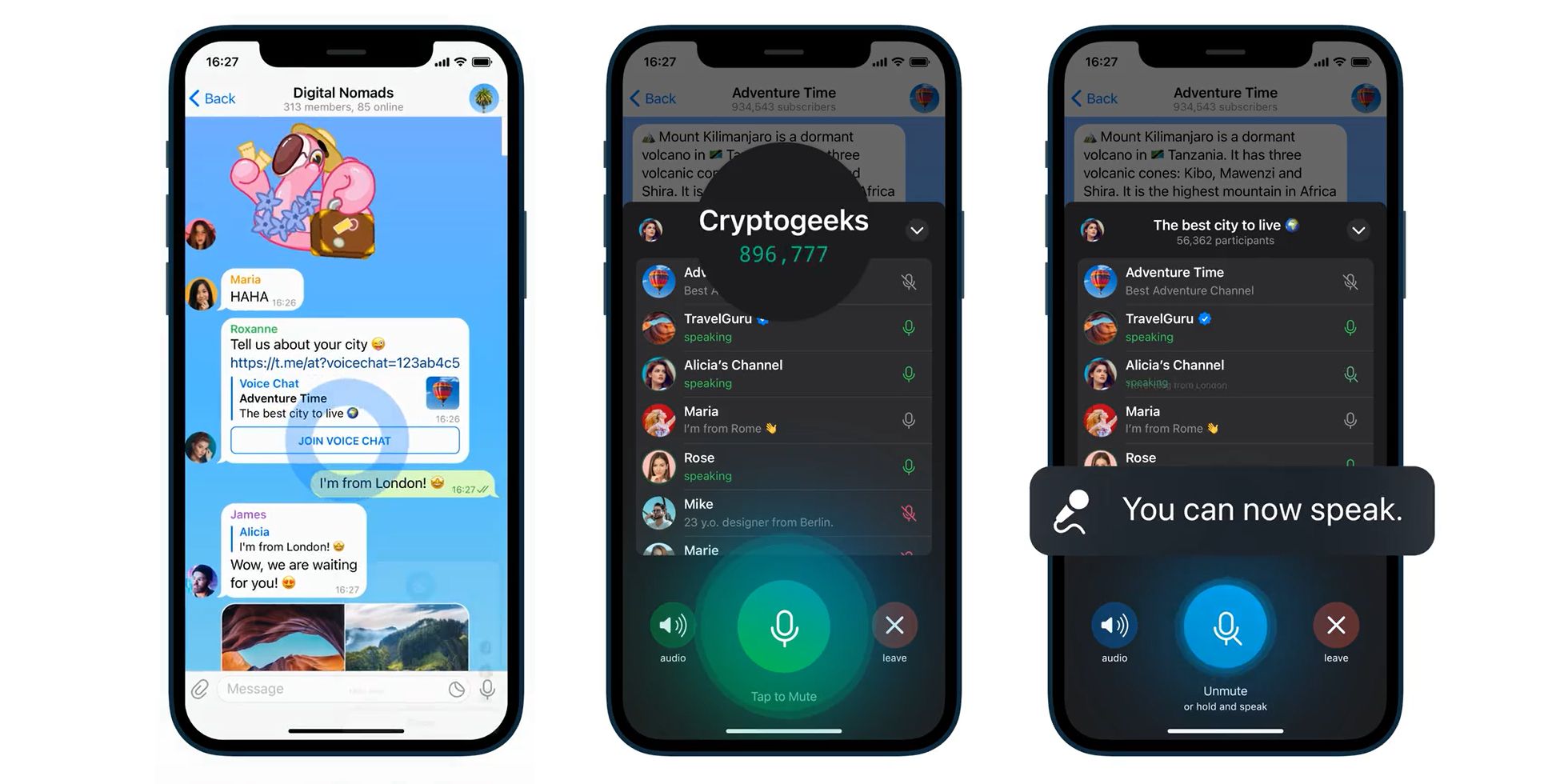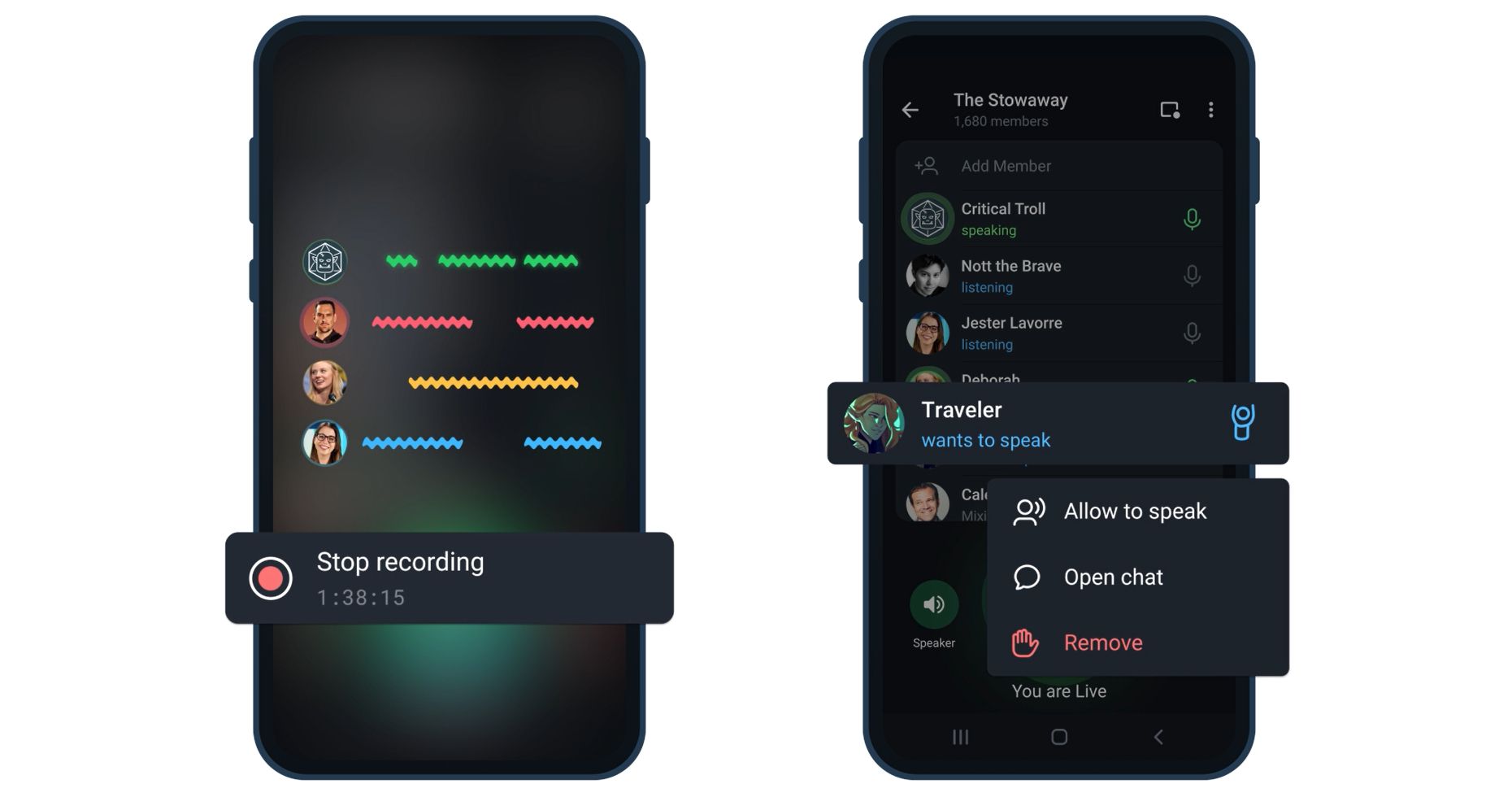Messaging app Telegram has rolled out an update to its Voice Chats feature that makes it possible to use channels and public groups as curated audio chat rooms similar to those of Clubhouse. 'Voice Chats 2.0' builds upon the voice functionality that was added to group chats at the end of 2020. Both are different takes on the voice chat features typically offered by messaging apps.
On WhatsApp or Facebook Messenger, for example, anyone can make an audio call to a group they are in, but it must be answered by someone for the call to begin and it ends when the last person leaves. Voice Chats within Telegram groups must be enabled by a group admin but, once they are, they can remain permanently enabled as an audio layer with group members able to come to and go from them as they please. Telegram describes the functionality as "persistent conference calls" in which any group member can chime in when they have something to say.
In bringing the feature to channels and group chats, Telegram has given admins control over who can speak, allowing for an audience and speakers dynamic. People can tap a button to 'raise their hand' if they wish to speak with the admin able to decide and speakers can be invited with special links that mean they don't have to wait to be unmuted by the admin. It's also possible for users with their own channels, such as public figures or celebrities, to join as their channel so as not to draw attention to their personal accounts.
Telegram Voice Chats 2.0: More Features
With regard to channels and public groups, Telegram describes the new functionality as being "like public radio reinvented for the 21st century." There is some truth to that in that there is no longer any limit to the number of participants for Voice Chats, meaning they could potentially have millions of listeners. For those that can't listen to a chat live, meanwhile, it's now also possible for admins to record a chat and then publish it to a channel or public group for listening back.
While users are in a Voice Chat, they can navigate away from the group or channel they are in and continue with other tasks in Telegram. This flexibility is extended beyond the app on Android, with Voice Chats able to run in the background while users switch between apps and floating widget providing quick access to controls and speaker information.
While the Voice Chats functionality has no doubt drawn on the Clubhouse concept, it doesn't feel like so much of a clone as the likes of Twitter Spaces or Instagram's rumored audio rooms do. Whereas these examples and Clubhouse itself feel very much based around the events of speaker appearances, it feels like Telegram has adapted the functionality to be a more useful and democratic tool as part of a messaging app. What's more, for now at least, it is a genuine differentiator from other messaging apps and another possible reason why people may choose to move to Telegram.
Source: Telegram


